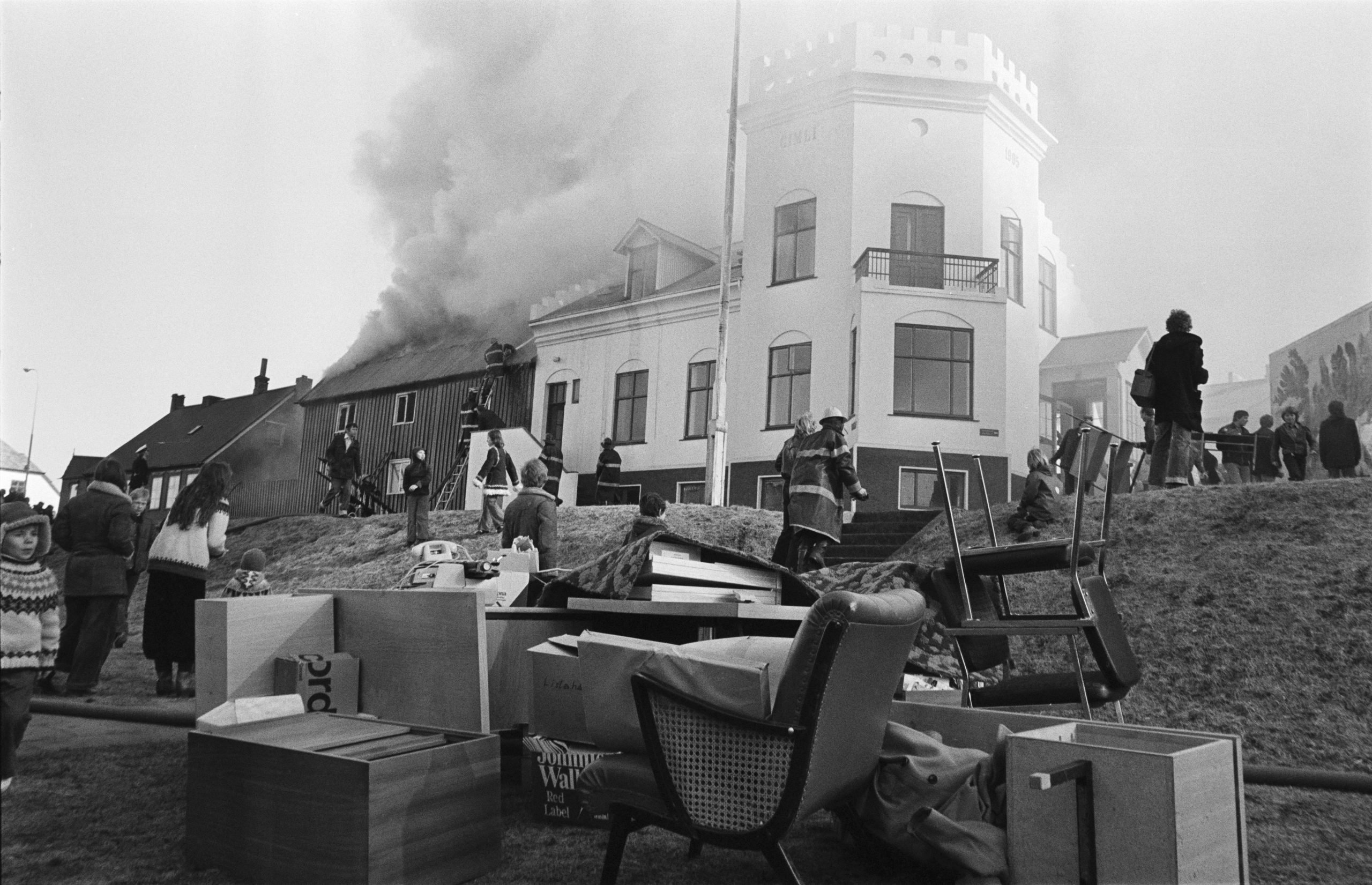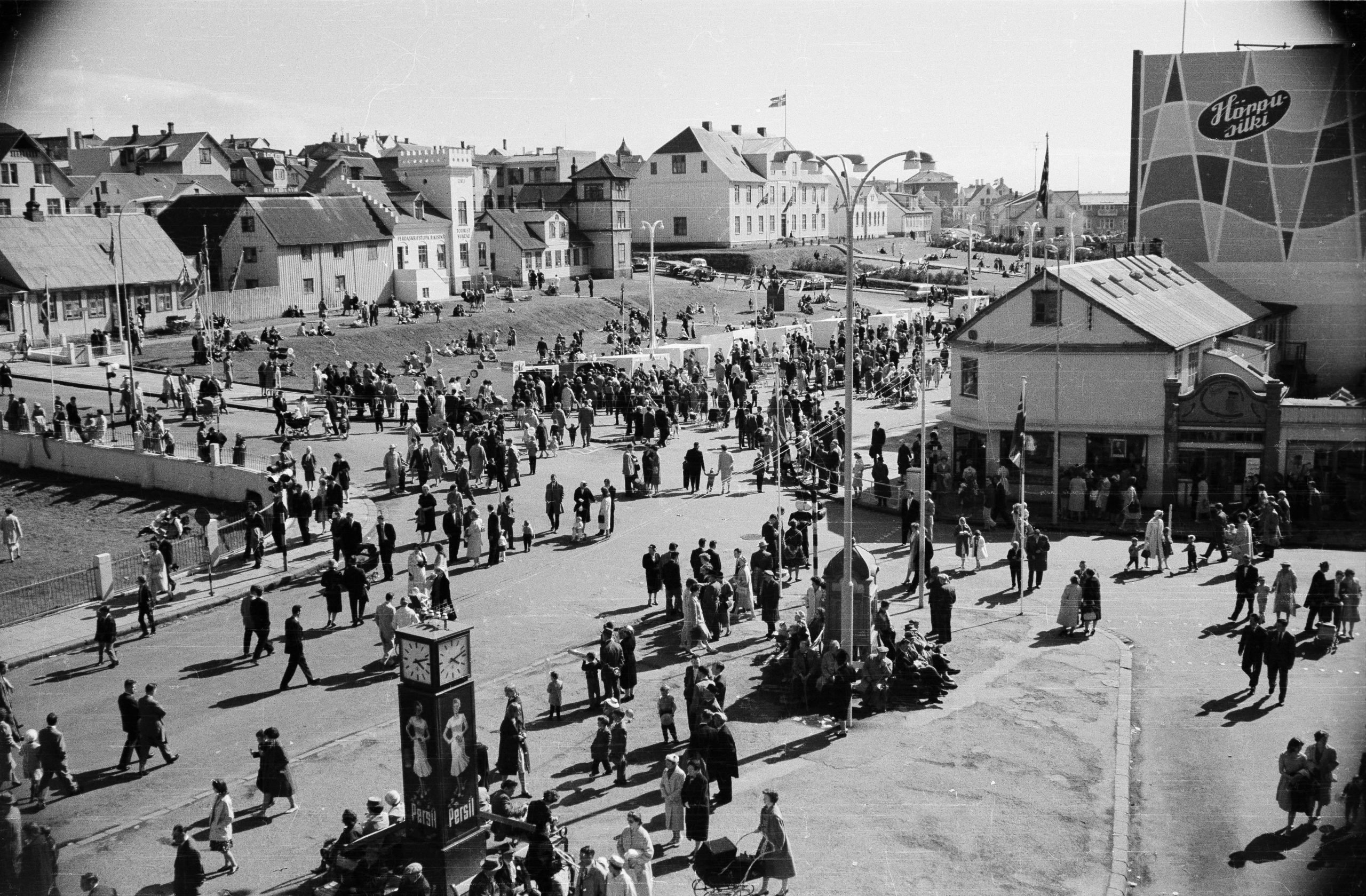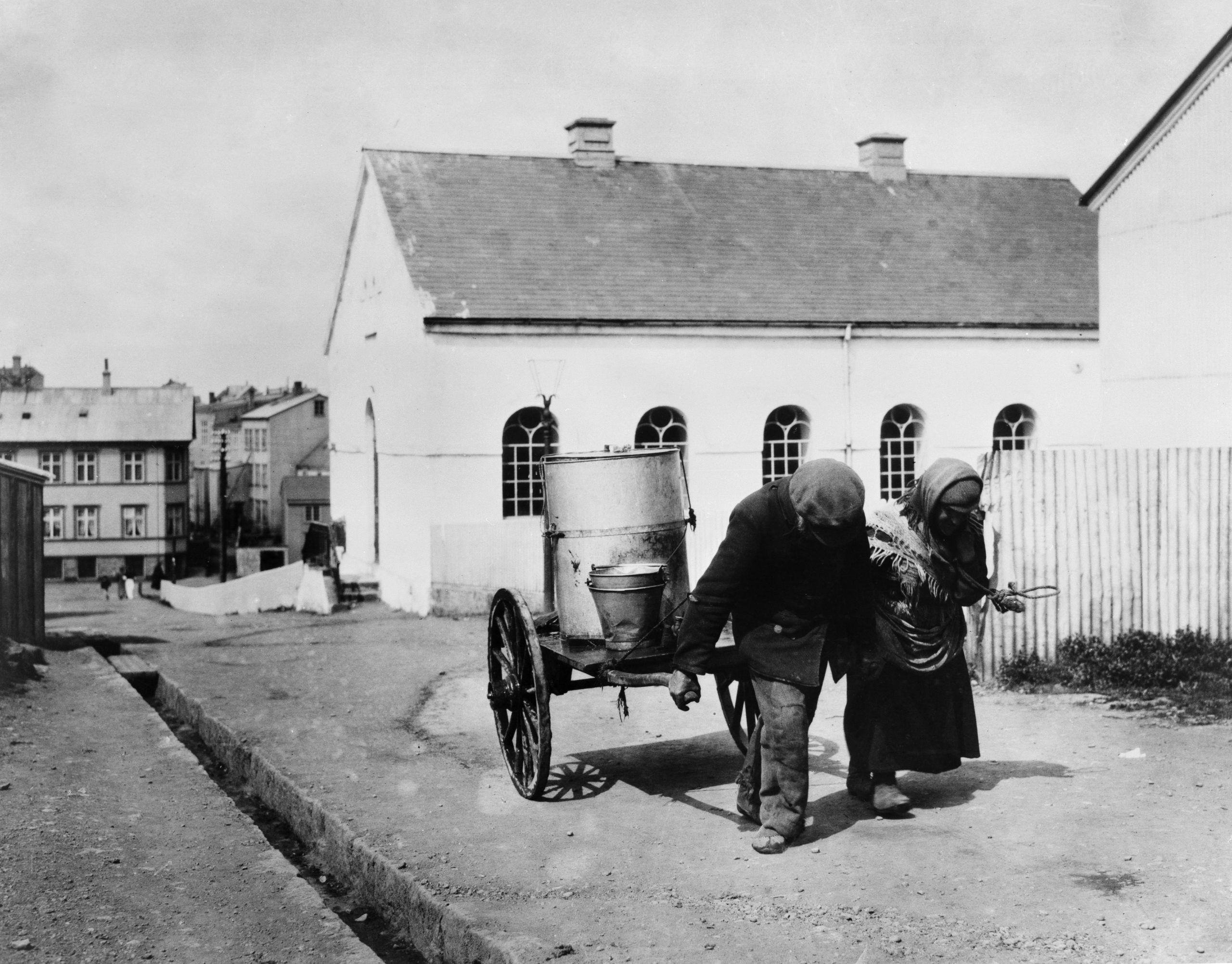The name Bernhöftstorfa (Bernhöft‘s Sward) is derived from the T.D. Bernhöft bakery, which stood in Bankastræti 2. Bernhöft‘s house was built at the north end of the lot in 1938, along with the bakery, peat store, grain store and other storage buildings. Bernhöft‘s bakery, the first in Iceland, remained in business until 1931. Below the house, Bernhöft cultivated a garden and installed a water-pump, which was much used. The house survives almost unchanged. Neighbouring buildings, damaged by fire in 1977, have been restored in their original form. The sculpture The Water Carrier from 1937 by Ásmundur Sveinsson (1893–1982) is dedicated to the women that carried water from the pump to the houses in town. The statue was meant to be placed here in 1949 but it was considered too unconventional. In 1967 it was cast in bronze and erected in Öskjuhlíð hill, but finally moved to it´s original appointed location in 2011. More sculptures by Sveinsson are on view at Ásmundarsafn museum.

“The mechanization of households is, when all comes to all, probably the progress that has benefitted women more than any legislation.” Bríet Bjarnhéðinsdóttir (1856–1940), a pioneer in the Icelandic women’s movement
To the south of the bakery buildings is Gimli, built in 1905. The house was built almost as an advertisment, using precast concrete units from the Mjölnir factory, of which one of the owners was the mayor. The southernmost of the buildings, Amtmannsstígur 1, was built in 1838. The row of buildings that make up Bernhöftstorfa comprise an important aspect of the architectural history of Reykjavík. In 1967 a development plan proposed constructing a city hall on the site, and moving the existing buildings to the Árbær open-air museum. At about that time a new building conservation movement came into being. The Torfa Movement was launched to campaign for the conservation of the buildings. After extended disputes, in 1979 the government agreed to conserve all the Bernhöftstorfa buildings. The open-air chessboard was installed in 1981 with a chess set by sculptor Jón Gunnar Árnson.


Historical markers in Reykjavík
In recent years the City of Reykjavík has been installing historical markers around the city. Such markers at historic sites and areas within Reykjavík enrich the experience of both residents and visitors, and provide information on the city‘s culture and history. The markers display information about history, art, literature and social life relating to the site in question, accompanied by pictures.
Text and photos: Reykjavík City Museum
See further at www.reykjavikcitymuseum.is




